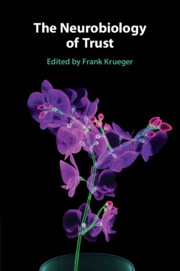Book contents
- The Neurobiology of Trust
- The Neurobiology of Trust
- Copyright page
- Dedication
- Contents
- Figures
- Tables
- Contributors
- Abbreviations
- Introduction
- Part I Fundamental Level of Trust
- Chapter 1 Trust and Psychology
- Chapter 2 Trust and Behavioral Economics
- Chapter 3 Trust and Digitalization
- Chapter 4 Trust and Human Factors
- Part II Neuropsychological Level of Trust
- Part III Neurocharacteristic Level of Trust
- Part IV Neuromolecular Level of Trust
- Part V Neuropathological Level of Trust
- Index
- References
Chapter 2 - Trust and Behavioral Economics
Exploration of Trust Based on Game Theory
from Part I - Fundamental Level of Trust
Published online by Cambridge University Press: 09 December 2021
- The Neurobiology of Trust
- The Neurobiology of Trust
- Copyright page
- Dedication
- Contents
- Figures
- Tables
- Contributors
- Abbreviations
- Introduction
- Part I Fundamental Level of Trust
- Chapter 1 Trust and Psychology
- Chapter 2 Trust and Behavioral Economics
- Chapter 3 Trust and Digitalization
- Chapter 4 Trust and Human Factors
- Part II Neuropsychological Level of Trust
- Part III Neurocharacteristic Level of Trust
- Part IV Neuromolecular Level of Trust
- Part V Neuropathological Level of Trust
- Index
- References
Summary
This chapter explores the role of trust in facilitating economic transactions. We cover seminal and more recent research suggesting how the game-theoretic approach in economics relies on trust to explain market transactions between two parties – individuals and firms. We also study how the experimental results of the trust game (and assorted variations) introduced by economists helps better our understanding of how trust affects the underlying dynamic in dyadic transactions. Relationships between trust levels in society and macroeconomic growth are also explored.
- Type
- Chapter
- Information
- The Neurobiology of Trust , pp. 36 - 53Publisher: Cambridge University PressPrint publication year: 2021
References
- 1
- Cited by



